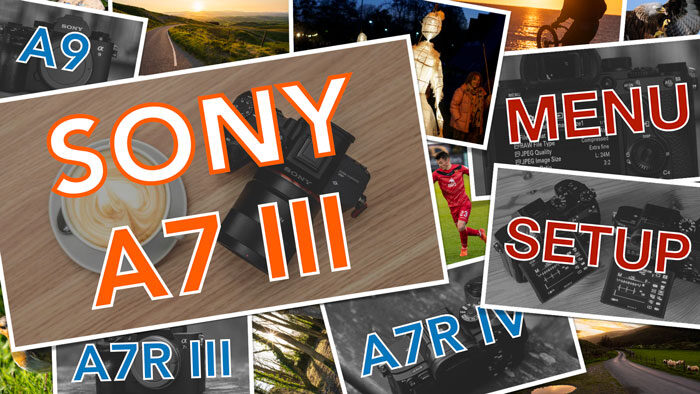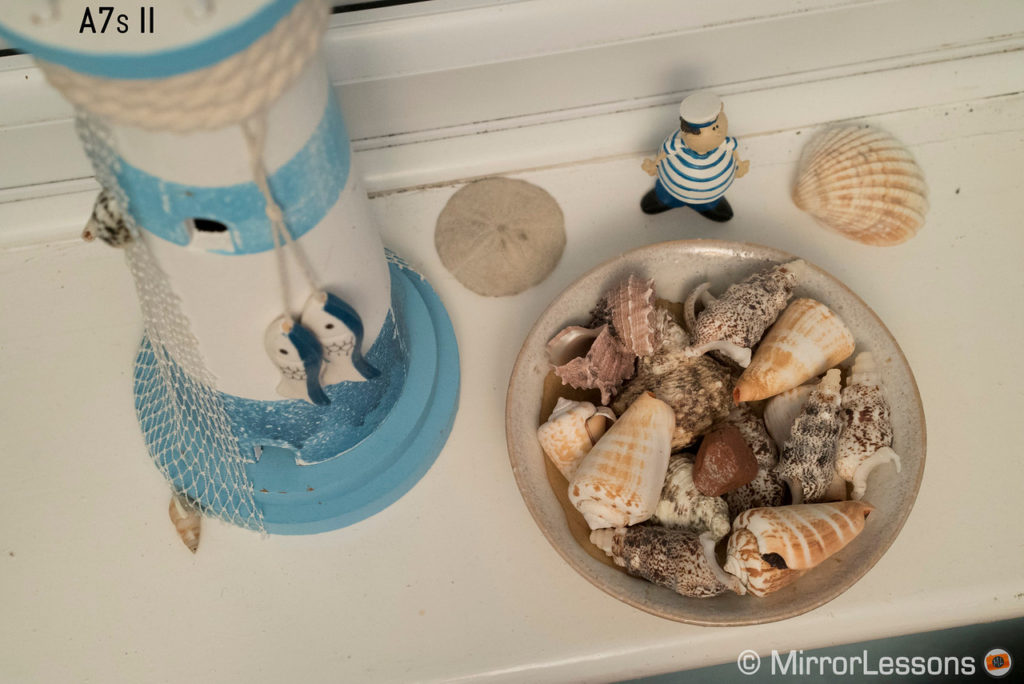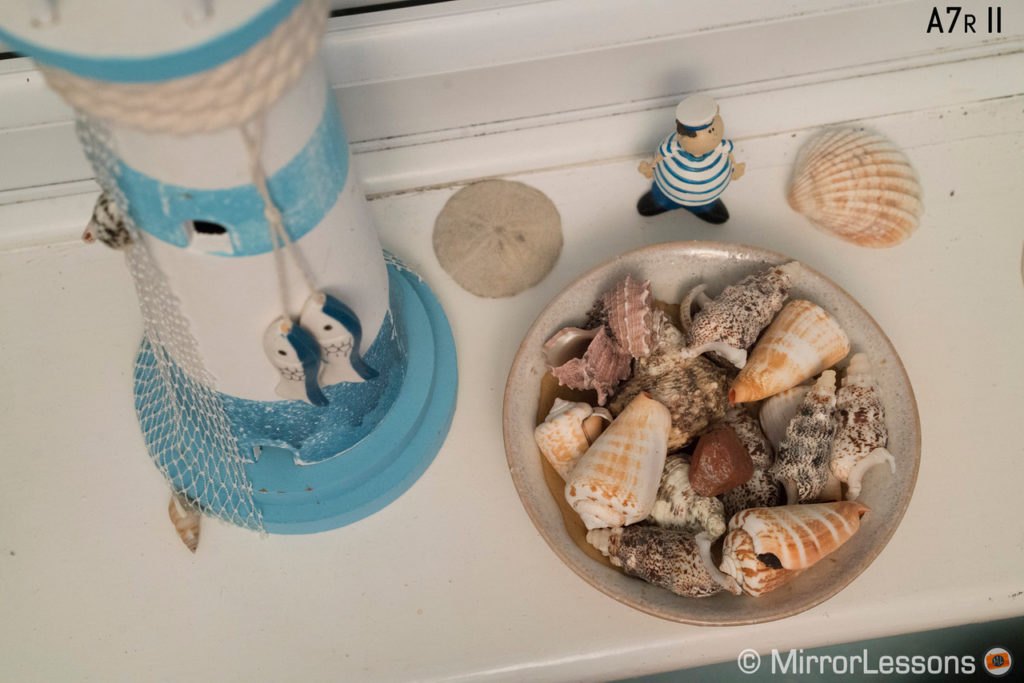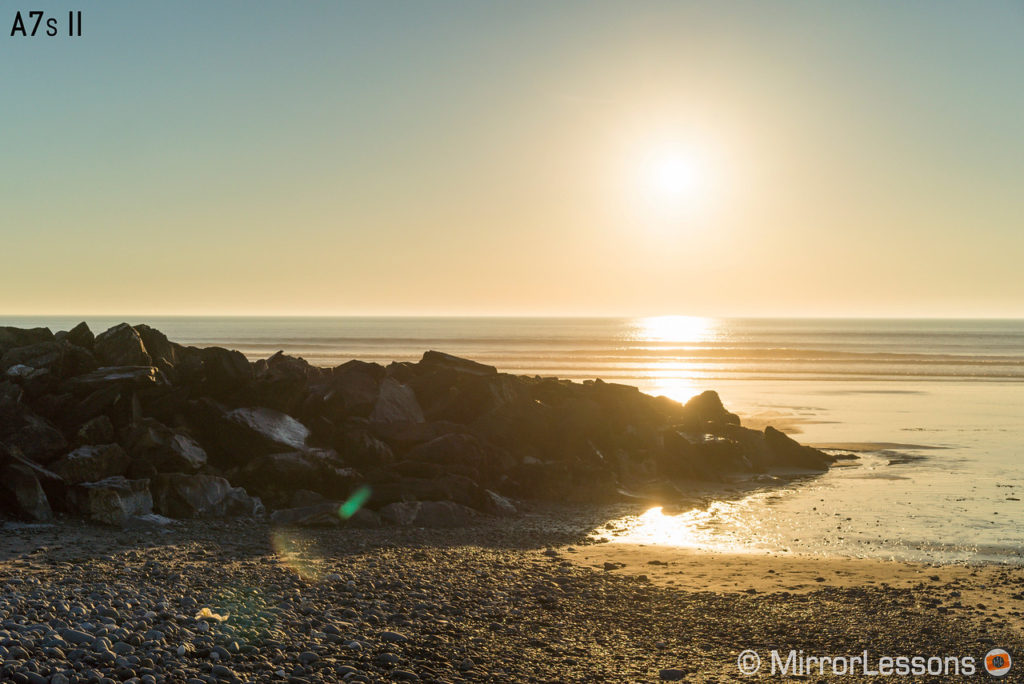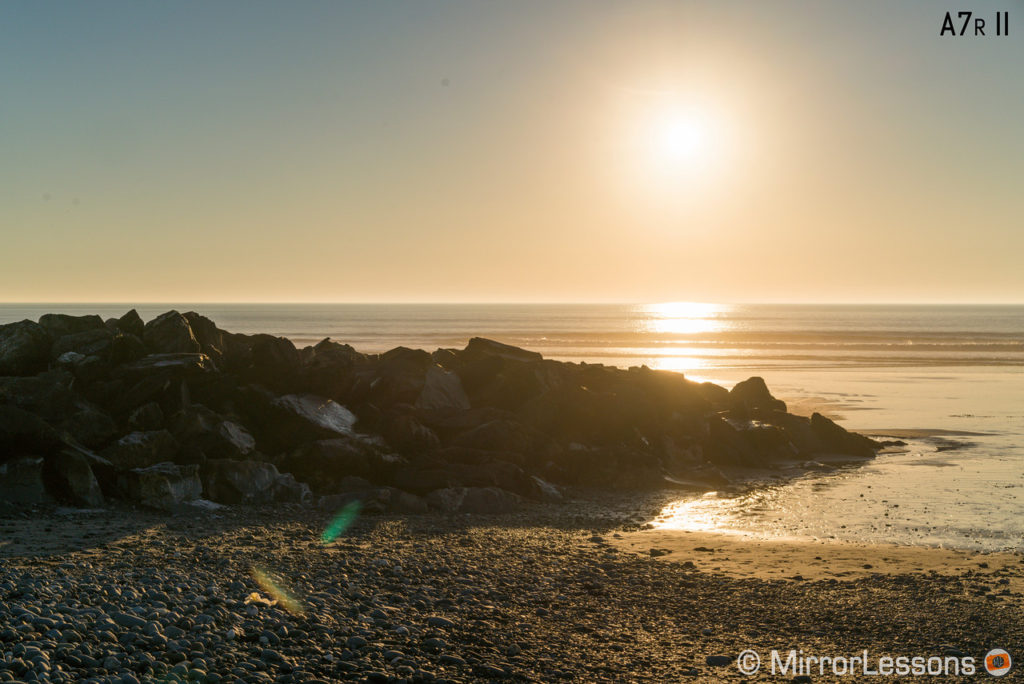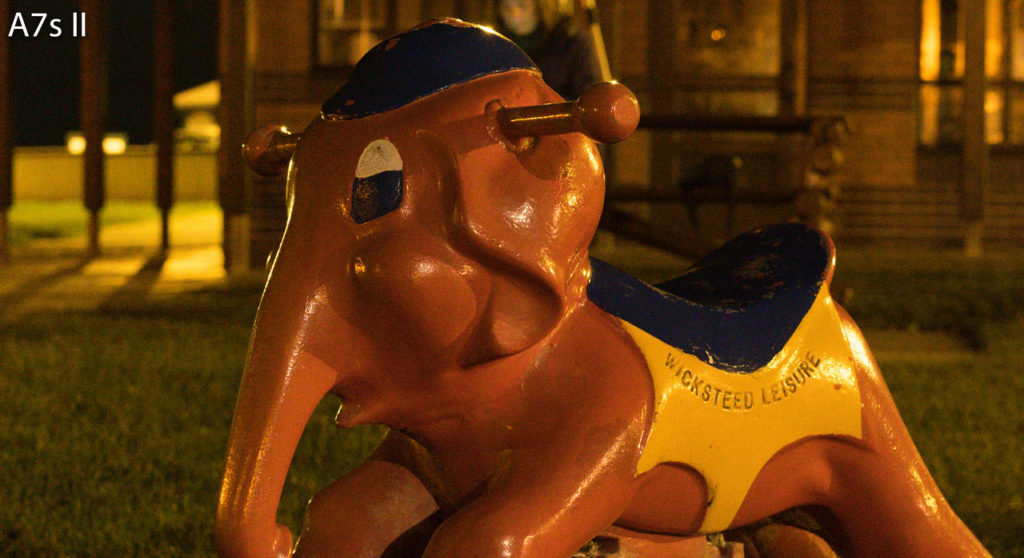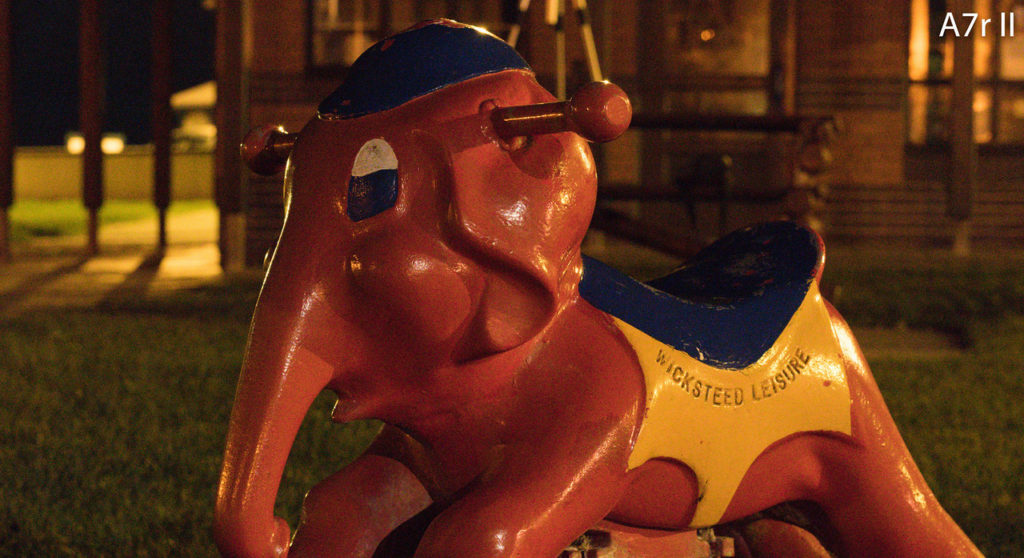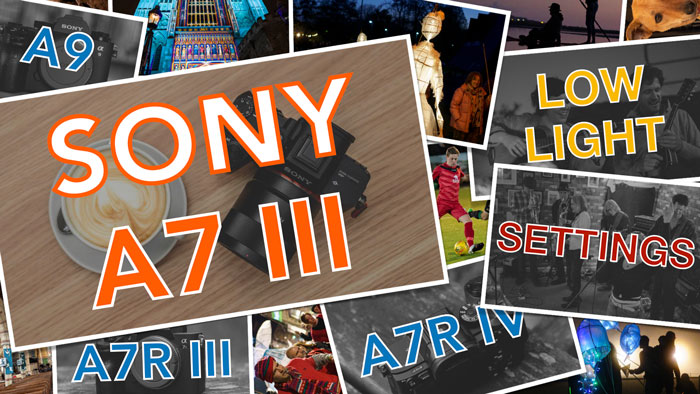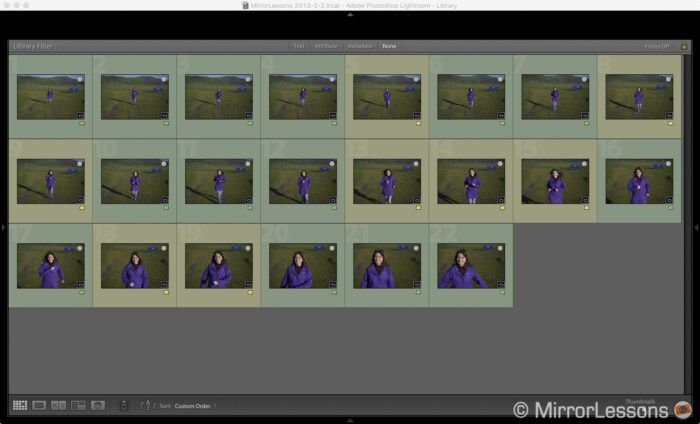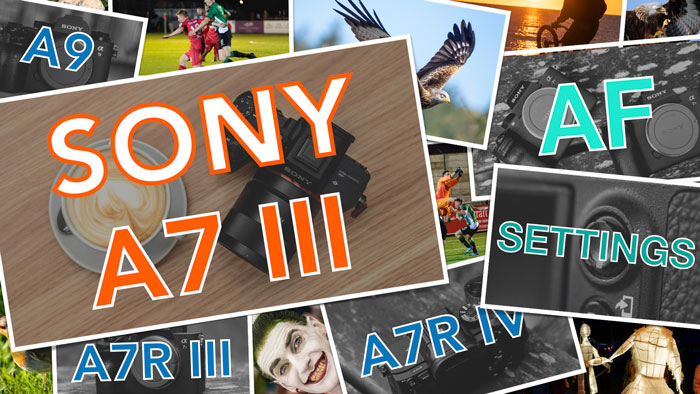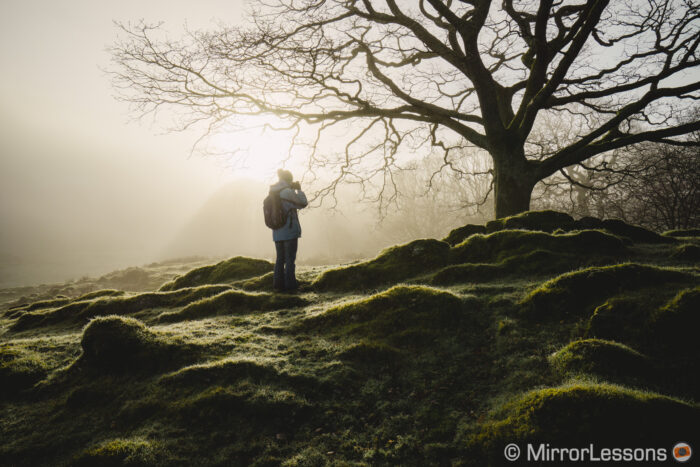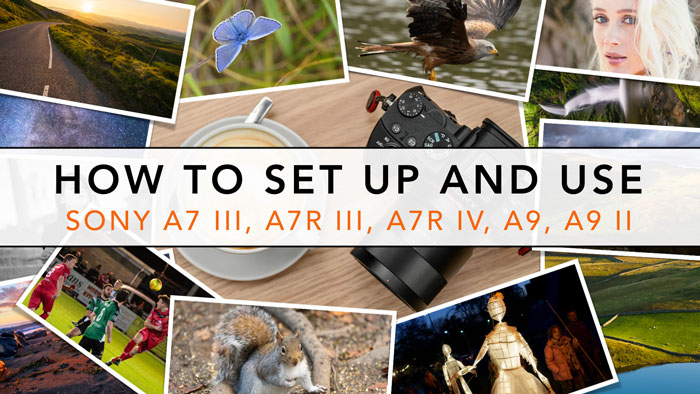In 2014 I selected the original A7s as one of my favourite cameras of 2014, not just for its stunning low-light capabilities for both stills and video but also because at the time, it felt like the most mature A7 model. The thing about Sony, however, is that it has become harder and harder to pick a favourite given all the new cameras constantly flooding the market. I mean, what other company has managed to release 7 full-frame cameras in less than two years?
With the new generation of mark II models, I admit that my impressions about the A7s have slightly changed. The low light capabilities are still excellent but after using the A7r mark II for over a year now, I’ve started to wonder just how necessary the extra performance of the A7s II at high ISOs really is.
So when I had the chance to test the latest Sony “low-light monster” camera, I took the opportunity to perform a comparison between the two flagship models.
Is there really a relevant difference in terms of image quality and performance between these two cameras? Let’s find out!
Note: since these two cameras share many aspects and functionalities, I’ve only highlighted the most relevant differences in this article.
Ethics statement: We own the A7r II and rented the A7s II for a week. We were not asked to write anything about the cameras in exchange for the opportunity, nor were we provided with any sort of compensation. Within the article, there are affiliate links. If you buy something after clicking the link, we will receive a small commission. To know more about our ethics, you can visit our full disclosure page. Thank you!
Table of Contents
1. Main Specs
2. Design
3. Image Quality
4. Low Light
5. Video
6. Autofocus and Stabilisation
7. Conclusion
8. Sample Images
9. Additional Content
Sony Alpha A7S II vs A7R II – Main Specs
- A7s mark II
- Sensor: 12 megapixel 35mm full frame Exmor CMOS
- Lens system: e-mount
- Weatherproof: Partial (Splash and dust proof)
- Internal Stabilisation: Yes (5-axis)
- Autofocus: Contrast detection AF with 169 contrast detection areas
- Continuous shooting: 5 fps (Speed), 2.5fps (focus)
- ISO Sensitivity: 100 – 102400 ISO (extended 50, 204800 and 409600)
- Shutter Speeds: 1/8000 to 30 seconds
- Viewfinder: XGA OLED electronic viewfinder with 2,359k dots, approx. 100% FOV coverage and 0.78x magnification
- LCD Screen: articulated 3″ LCD monitor (1,228k dots)
- Movie recording: XAVC S 4K up to 30fps, Full HD up to 120fps
- Built-in Flash: No
- Extra Features: WiFi, NFC, Panorama, HDR, Multiple exposure, S-log2, S-log3
- Dimensions: 126.9 x 95.7 x 60.3mm
- Weight: 627g (including battery and memory card)
- A7r mark II
- Sensor: 42 megapixel 35mm full frame Exmor R CMOS BSI
- Lens system: e-mount
- Weatherproof: Partial (Splash and dust proof)
- Internal Stabilisation: Yes (5-axis)
- Autofocus: Contrast detection AF with 25 contrast and 399 phase detection areas
- Continuous shooting: 5 fps
- ISO Sensitivity: 100 – 25600 ISO (extended 50, 51200 and 102400)
- Shutter Speeds: 1/8000 to 30 seconds
- Viewfinder: XGA OLED electronic viewfinder with 2,359k dots, approx. 100% FOV coverage and 0.78x magnification
- LCD Screen: articulated 3″ LCD monitor (1,228k dots)
- Movie recording: XAVC S 4K up to 30fps, Full HD up to 60fps and 120fps in 720p
- Built-in Flash: No
- Extra Features: WiFi, NFC, Panorama, HDR, Multiple exposure, S-log2
- Dimensions: 126.9 x 95.7 x 60.3mm
- Weight: 625g (including battery and memory card)
Design, ergonomics and ease of use
The design of the cameras is identical so there is basically nothing to compare. Sony updated the body of the mark II generation and I admit I prefer it to the mark I series. The shutter release button is easier to reach, the grip is more comfortable and the extra custom button on top is a welcome addition. Both cameras are well-built with a magnesium alloy body that features weather-sealing against dust and moisture.
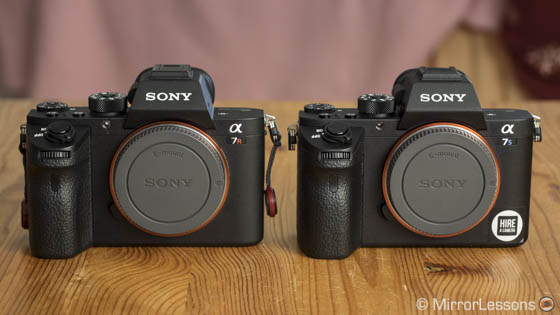
So let’s start with what I like about both cameras:
- The grip is comfortable even when using a telephoto lens such as the FE 70-200mmm f/4.
- The amount of customisation available on both cameras is enough for a good user experience but it takes some time to familiarise yourself with all the options available. Some features are hidden and can only be activated if you assign them to a custom button (like the Eye AF mode). Once you’ve found the optimal customisation, the camera becomes more intuitive and you will be less frustrated by the very unorganised menu system (it’s a mess).
- The EVF is excellent thanks to the 0.78x magnification ratio and the Zeiss T* coating. It is definitely one of the best electronic viewfinders on the market right now. My only complaint concerns the magnification focus assist which decreases the resolution.
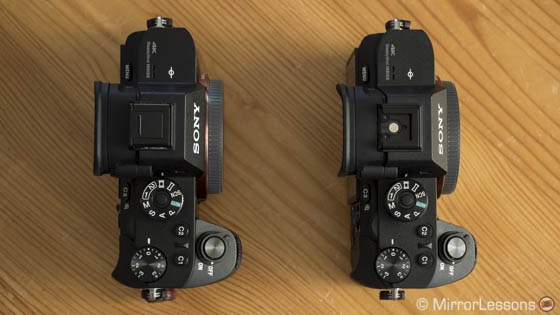
Now let’s see what I dislike and what could be improved:
- The two dials to control shutter speed and aperture on the front and rear of the camera are a little too small. The rear one especially is often difficult to reach. I prefer the metal dials of the first generation. They were thicker and easier to use.
- The shooting mode dial on top has an unlock button and you have to press it each time you want to rotate it which is very uncomfortable. It feels like a job half done. They could have given us the option to manually lock or unlock the dial like on other cameras.
- Some extra customisation would be welcome like the ability to start movie recording with the shutter button in movie mode. It would also reduce the frustration of using the dedicated movie recording button on the side of the thumb rest which is in an uncomfortable position.
- The command wheel on the rear moves too freely.
- I don’t find focus peaking precise enough in some situations, no matter which colour or intensity I choose.
- The eye sensor that automatically activates the EVF is still a little bit too sensitive. It is becoming even worse on my A7r II that I’ve owned for more than one year now, so I decided to assign the EVF/LCD switch to the right button of the control wheel and change it manually.
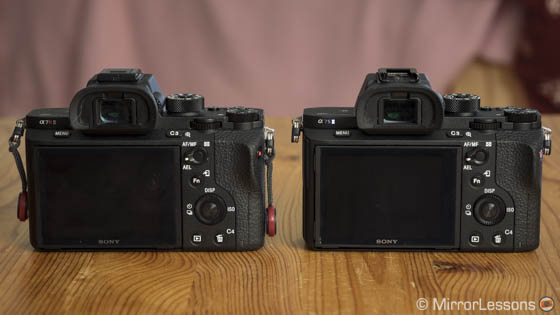
I don’t really have much to add. The LCD screen is the same as the other A7 cameras and can be tilted up or down. I wonder why Sony didn’t opt for a multi-angle monitor on the A7s II since the latter is designed mainly for video. It could have been a welcome update. The monitors lack touch sensitivity and that could be another welcome addition (Sony has the technology because they implemented it on the a5100).
Both cameras come with a proper battery charger and two batteries. Both cameras can also be charged via USB. Don’t expect much from the battery performance though: these are the two worst A7 cameras in this regard especially if you shoot 4K video. Two is the minimum but I recommend at least 3 or 4. Optional battery/vertical grips are available to expand the battery life. There is the official Sony VG-C2EM one (takes 2 batteries and has 3 custom buttons) or the third party MK-A7II from Meike (2 batteries and includes a wireless remote).
Also included in the box is a cable protector for the microphone and headphone ports, useful when shooting video with external accessories connected to the camera.
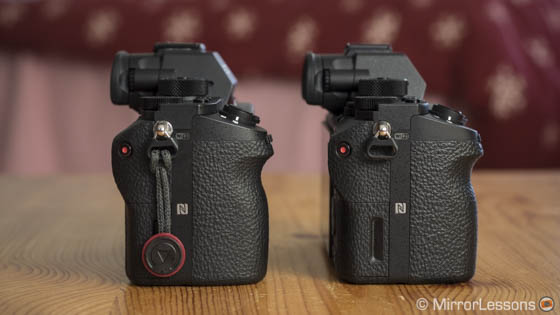
Sony A7R II vs A7S II – Image quality
While both cameras have a 35mm (full-frame) sensor, the first main difference concerns the resolution and sensor type.
The A7s mark II has a 12MP Exmor CMOS sensor with an ISO sensitivity range of 100 to 204800 ISO and two extended values (pull 50, push 409600 ISO). It is the full-frame camera with the widest ISO range along with the Nikon D4s and excluding the Nikon D5 (up to ISO 3,280,000).
The A7r mark II has a 42MP sensor with BSI (Back-Side Illuminated) that it supposed to provide better dynamic range and low-light performance since the structure of the sensor allows it to gather more light than traditional CMOS sensors. The ISO sensitivity goes from 100 up to 25600 with three extended values (pull 50, push 51200 and 102400 ISO).
Given the difference in sensor resolution, I won’t go into too much detail concerning sharpness and detail in good light and at low ISOs since the A7r II has a clear advantage. However, I would like to remind you that despite the megapixel race that has gripped the digital photography world, the 12MP of the A7s II is still more than enough for many purposes including small and medium sized prints.
Once thing I can point out is that I found a slightly different colour rendering between the two sensors even when the settings are exactly the same on both cameras, including the colour profile. The A7s mark II tends toward a more “yellowish” tint in comparison to the A7r II. It can also be noticed in artificial light and at high ISOs. It is also worth noting that both cameras share the same creative style (colour profile) options.
Concerning dynamic range, here again the difference is not that relevant. Both sensors are really good and can handle highlights and shadows very well. I took a comparison shot with very strong contrast as you can see below. I opened the shadows to the maximum (+100), recovered the highlights completely (-100) and raised the exposure by 3EV in Lightroom. Sharpness and noise reduction were set to 0. The RAW file quality was set to uncompressed for both cameras. As you can see there is noise from both cameras in the shadows. The A7r II retains a little more detail but also tends toward a greenish tint.
If I post process the two shots in a normal manner, the results look fine and comparable on both cameras, albeit with that slight difference in tint I mentioned above.
Sony A7R II vs A7S II – Low Light and ISO
The main difference between the two cameras has to do with high ISO performance as expected. However the results are closer than we might think at first especially if we analyse it in terms of usable images.
Below is a comparison with a shot taken at 12800 ISO. This is the sensitivity I consider the very limit on the A7r mark II but it is still usable. I resized the A7r II version to match the 12MP of the A7s II. As you can see, the difference is not that big. The A7s II has less colour noise while the A7r II has slightly more sharpness. Now remember that this is without any noise reduction applied to the Raw files. With +10 or +15 colour noise reduction in Lightroom, both images would look even better.
Now if I include the 42MP version of the A7r II image, it might appear that is has more noise. However, you also get almost 4 times the resolution. This is to me an advantage for two reasons:
- You can downsample to reduce the noise perception while keeping an excellent resolution (20 or 24MP for example).
- A higher resolution will give you more detail when printing.
So where is the real advantage of the A7s II?
Well, I find the A7s II usable up to 51200, with 102400 ISO being the very limit for extreme situations. From 25600 the A7r mark II really starts to lose some detail and noise simply becomes too invasive. So there is a 2 or 3Ev advantage at extremely high ISO values. If you click here you can access a full ISO comparison gallery from ISO 800 up to the maximum reach of each camera.
Having 2 or 3 stops of usable ISO could be seen as a great advantage at first but as far as stills are concerned, I realised that I rarely need to go beyond 12800. I’ve shot in various low-light situations with the A7r mark II and I rarely felt the need for better performance. Usually a fast lens is enough to compensate or if you don’t need a fast shutter speed, there is also the sensor stabilisation (more on this further below).
Sony A7S II vs A7R II – Video
What could be better than a proper comparison video to show you the differences concerning the 4K and Full HD capabilities of the two cameras? Below you will find a 5 minute clip that compares the two cameras in terms of their colours, dynamic range, ISO, autofocus, stabilisation, rolling shutter and more.
If I were to summarise briefly the key differences when it comes to video, I would say that:
- The A7s II is designed to give the best quality in full frame mode while the A7r II has full pixel readout in APS-C/Super35 mode.
- The A7s II has better high ISO capabilities but the A7r II holds well up to ISO 12800 in Super35 mode.
- The A7r II has a faster autofocus.
- The A7s II can do 120fps in Full HD while the A7r II can only do this in 720p.
- The A7s II has an extra S-log gamma profile (S-log3).
Note: in the video above I mention a black spot issue on the A7s II. This is no longer a problem since Sony released a firmware update (1.10) that solves the issue.
Autofocus and 5-axis stabilisation (Stills and Video)
Concerning the autofocus capabilities, I found that the A7r mark II was clearly superior even in low-light. By contrast, I expected something more from the A7s II given its great low-light sensitivity (-4Ev). Of course the two AF systems are different so that explains the discrepancy and shows how phase detection points can provide better results.
The A7s has a contrast detection AF system with 169 points. The nine central AF points are divided into 16 segments. The continuous shooting speed is 5fps with speed priority and 2.5fps with focus priority.
The A7r II has a hybrid autofocus system with 25 contrast and 399 phase detection points. The 399 phase detection points make the camera more compatible with A-mount and EF mount lenses. The camera can shoot up to 5fps with focus priority.
In good light, both cameras focus fast in Single AF and overall the performance is similar since the A7r II uses contrast detection in S-AF. In Continuous AF, the A7r II has a clear advantage because it switches to phase detection so you don’t have that annoying back and forth movement of the lens. In the simple test below, you can see how the A7r II managed to track Heather running more accurately. The A7r II also has another advantage and that is its burst speed of 5fps with focus priority. By contrast, Sony reduced the speed on the A7s II to 2.5fps.
Note: the green label means that the shot is perfectly in focus. Yellow means that the result is slightly soft and red means that it is out of focus. You can check out the full sized images in the Smugmug gallery here. The shots were taken with the FE 55mm f/1.8.
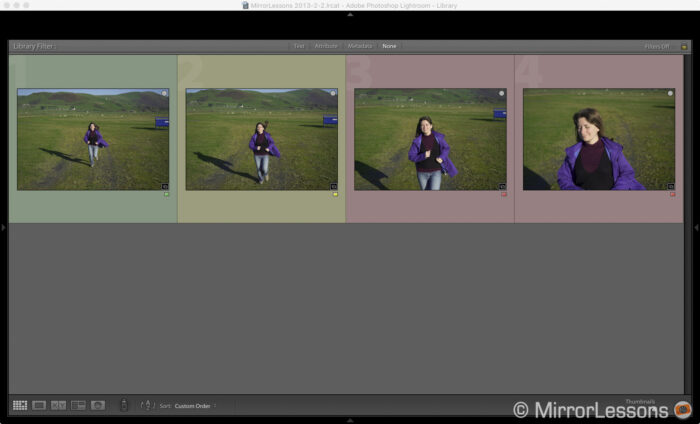
In low-light, the A7r II focuses faster if you leave it in C-AF. With the A7s II no matter which focus mode you choose the lens will still hunt. It also suffers from specular highlights and sometimes focuses on the background instead of the subject even when using the small or medium flexible spot area. I had the chance to shoot a lantern parade recently with the A7s mark II so I was able to compare the experience with a similar event I shot one month ago in another town. Overall I found the A7r II faster and more accurate while with the A7s II struggled more. In the end I brought back good shots from both cameras.
I wouldn’t hesitate to use the A7r II for this kind of low light event, taking into consideration everything I’ve written so far about the IQ and AF.
Sony implemented 5-axis sensor stabilisation on all the mark II models. Here again I ran a quick test to see if there was a relevant difference in performance. Both cameras have the same shutter mechanism (500,000 cycles) and they also have an electronic first curtain and a full electronic shutter. The latter can help to reduce shake.
With the A7s II, I managed to take a perfectly sharp shot at 1.6s (electronic shutter) and an almost perfect shot at 2s. The A7r II struggles more because more megapixels mean that the sensor is more sensitive to micro shakes. I managed to push the A7r II down to 1s using the electronic shutter and I got an almost perfect result. Overall I also needed fewer attempts with the A7s II than with the A7r II to get good results.
The examples above are extreme. In a normal situation I would advise to stay above 1/2s at the very least. The keeper rate improves considerably above 1/5s.
Conclusion – Sony A7S II or A7R II ?
In 2015, I wholeheartedly recommended the A7s for its great low-light capabilities, but now that the A7r II and A7s II are out, I find myself hesitating more. I think that for most situations, the A7r II is a more complete camera. Most of the time, the needs you might have in low-light situations are met with the 5-axis stabilisation, the great performance of the 42MP BSI sensor and a fast lens.
If low-light situations are what you find yourself encountering on a daily basis, then the A7s II can become a better option if you know you will frequently use it between 6400 and 51200 ISO. If you work with Sony cameras already, it can also become an excellent second body for stills in poor light.
My opinion of these two cameras isn’t the same for video. While the A7r II has excellent 4K capabilities, the A7s II was born to shoot movies above all else and the footage I recorded with it is some of the most beautiful I’ve seen from a mirrorless camera. More than for photographers, this camera is a great tool for filmmakers. However if your video needs are not that desperate, the quality of the A7r II is more than enough.
One last thing: What about the Sony A7 II?
With all the recent announcements, the A7 II seems to have faded into the background, even though it isn’t much older than the other models. The truth is that this camera is still an excellent choice and is perhaps the most balanced of the three if we take price into account.
Its dynamic range and low-light performance can be just as good and it features the same design and the 5-axis stabilisation system. It lacks some useful features such as the electronic shutter but there is a firmware update that brings uncompressed RAW and the ability to choose phase detection points manually to enhance compatibility with A-mount lenses and the LA-EA3 adapter. The only major difference concerns the video capabilities where the other two cameras are clearly superior.
Check price of the Sony A7r II on:
Amazon | Amazon UK | B&H Photo | eBay
Check price of the Sony A7s II on:
Amazon | Amazon UK | B&H Photo | eBay
Second-hand Sony cameras on
MPB US | MPB UK



